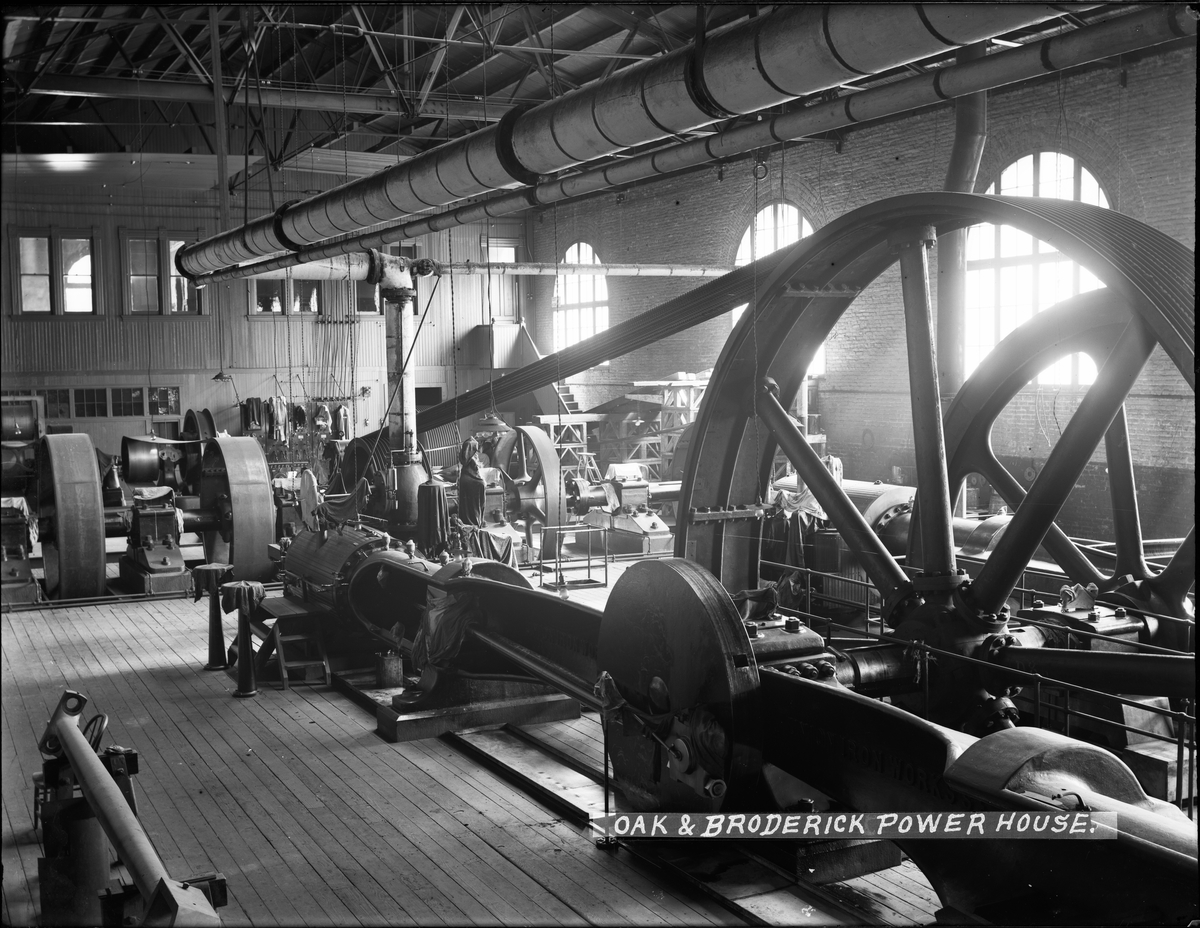San Francisco's Steamy Past
The age of steam power is long past, but its impact on our city, and the engineering prowess of those massive machines, is remarkable. As we plunge deeper into the digital age in a city that now prides itself on being at the cutting edge of new technology, it's astonishing to reflect on how much San Francisco owes to the hot sweaty puff of steam engines.
Around the turn of the 20th century, San Francisco's transportation network ran almost entirely on steam power in one form or another. Whether it was the steam engine pulling passengers on the Ferries and Cliff House Line, the freight trains rolling in and out of town or the countless stationary engines generating power and pulling cable cars, steam really moved our city.

Oak and Broderick Powerhouse Engine Room | Circa 1905 | U00445
This shot shows one such machine used at the Oak and Broderick Car & Powerhouse to create electricity. The complex arrangement of pulleys, belts and generators was run by the long steam piston in the mid-ground of the image, which transferred horizontal movement into rotational movement of the huge wheel at frame right. Engines like this one, which were powered largely by coal or natural gas-fired boilers, were marvels of engineering and craftsmanship—real gems of the Industrial Revolution.
For all their incredible complexity, massive size and tireless effort, steam engines just couldn't survive the march of time. As our city's transit system modernized, smaller, simpler means of generating power and pulling cables made the steam plants of the late 1800s obsolete. Not to mention the flood of hydroelectric power from various sources around the state, which brought cleaner and cheaper electricity to run the streetcars, cable machines and electric trolley buses.
Today, we're a long way off from the days of billowing smokestacks and clamoring machinery, but without these beasts of metal, San Francisco would have been severely stunted and, arguably, would not have its now iconic cable car system.
Be sure to check out more historic photos on the SFMTA Photo Archive website and follow us on Flickr, Twitter, Google+, and Instagram!
